Serves 4-20+
Level of difficulty 2.75
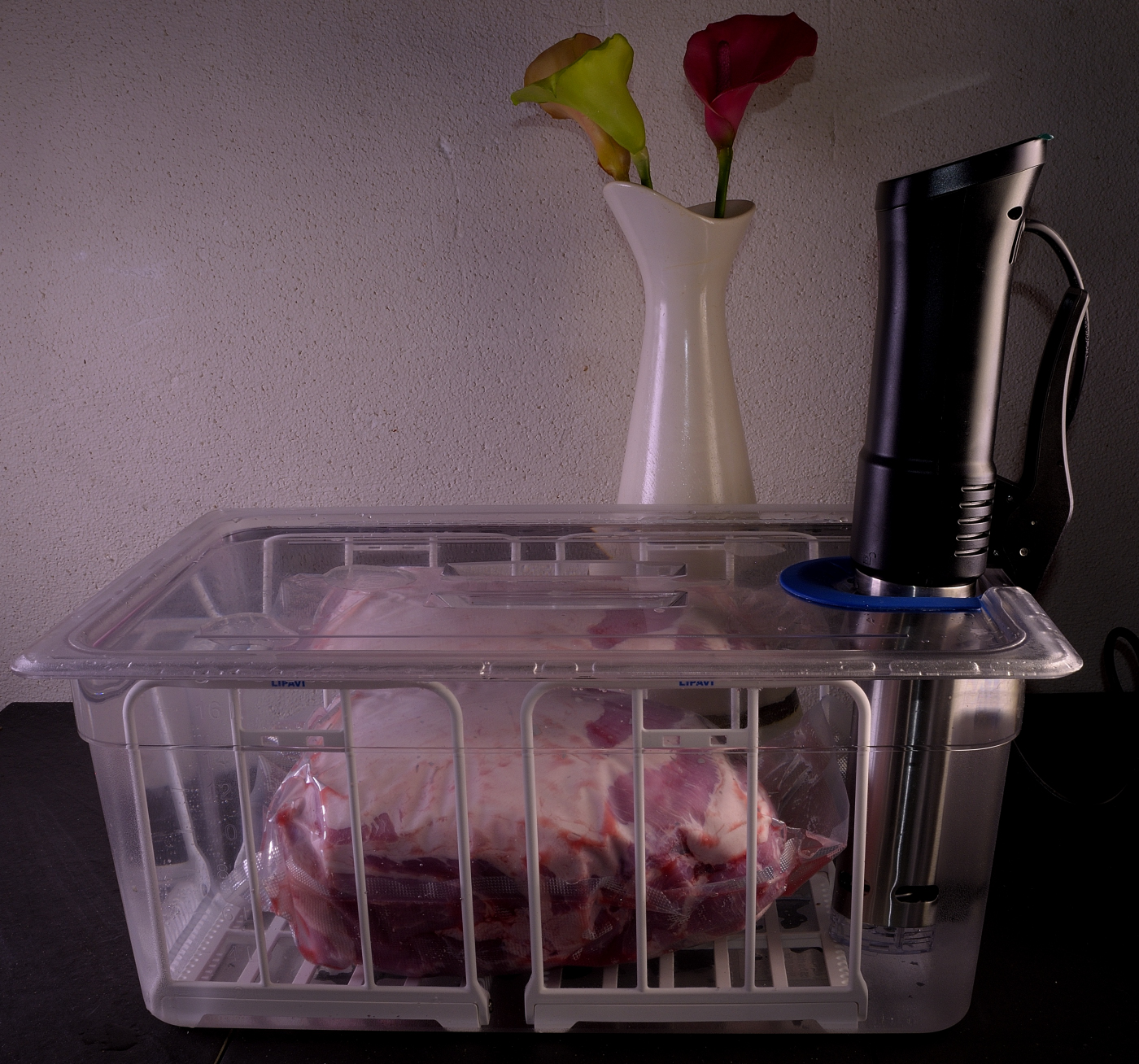
Above: Lipavi C15 container, N15 polycarbonate racks. Lipavi C15L-UNIR lid, Inkbird immersion circulator.
Processing the roast:
Preheat the sous vide bath to 183 F/84 C. This seemingly high temperature will accelerate the pork through the temperature danger zone (40F/4C-125F/52C). Once the vacuum sealed roast is staged into the bath, the temperature is immediately lowered to 145 F/63 C. This is important to take advantage of sous vide’s ability to prevent moisture loss and excessive shrinkage.
The actual weight is not as important as is the shortest distance from the surface to the geometrical center. A full sized roast will not require a significantly longer interval to process than one cut into smaller pieces

Go big?
Extra large sleeves are available on-line to accommodate large roasts. If the sleeve is wider than the sealing bar on a channel vacuum, each end of the bag is sealed twice at opposing angles–the empty sleeve is turned at 45 degrees to seal half of the opening on the heat bar. The bag is turned and the remaining “half” opening is sealed (see below).
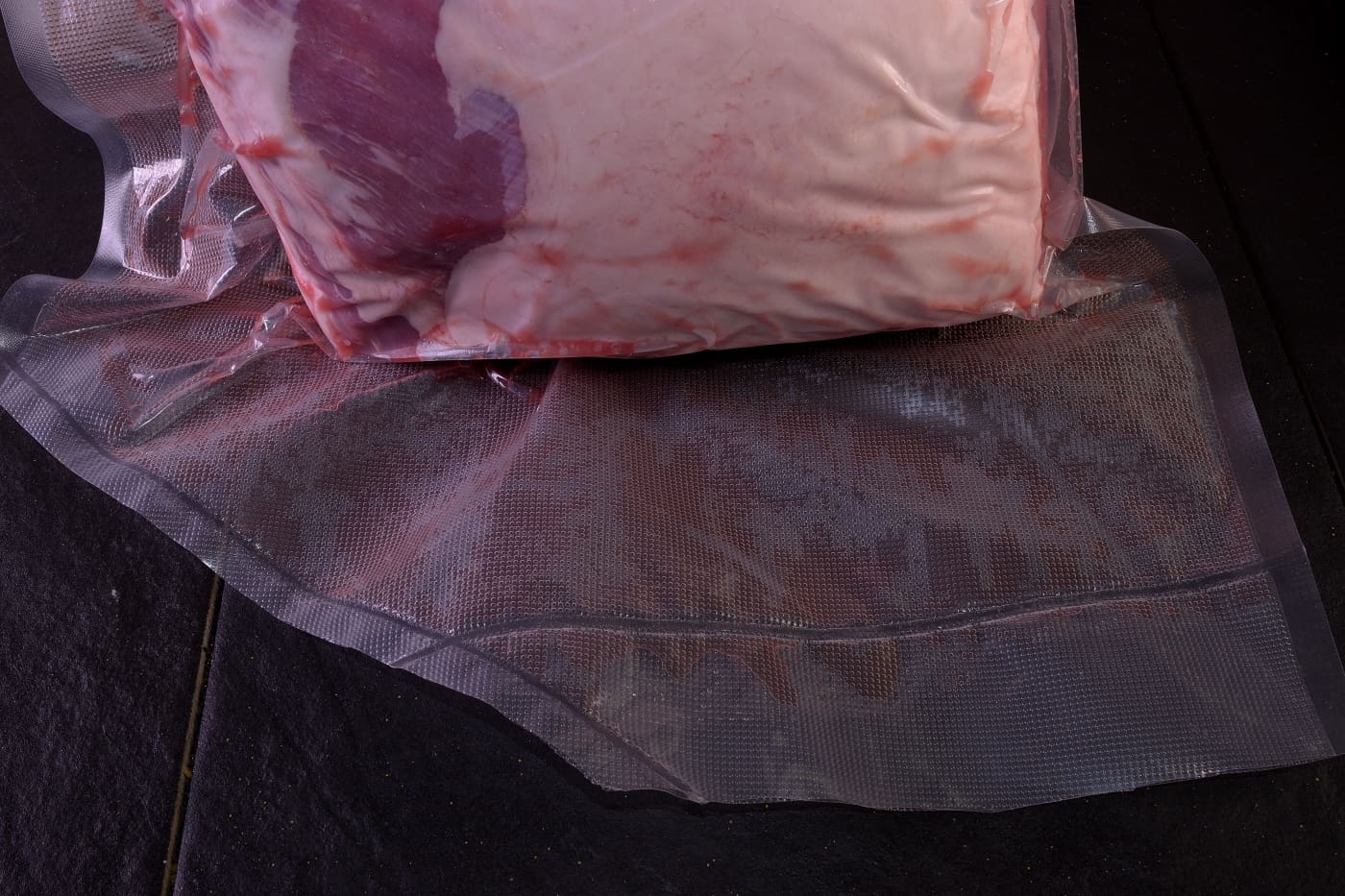
After loading the whole roast into the large sleeve, seal the other end of the bag at angles as shown above. Vacuum is only applied for the last step.
Stage the sealed roast into the sous vide bath. Remember to LOWER THE TEMPERATURE TO 145 F/63 C. Process the roast for a minimum of 24 hours. The longer you process the roast, the more tender it will become–and the more moisture it will surrender. Temperatures govern appearance of doneness and safety–they should always be applied with attention to precision.
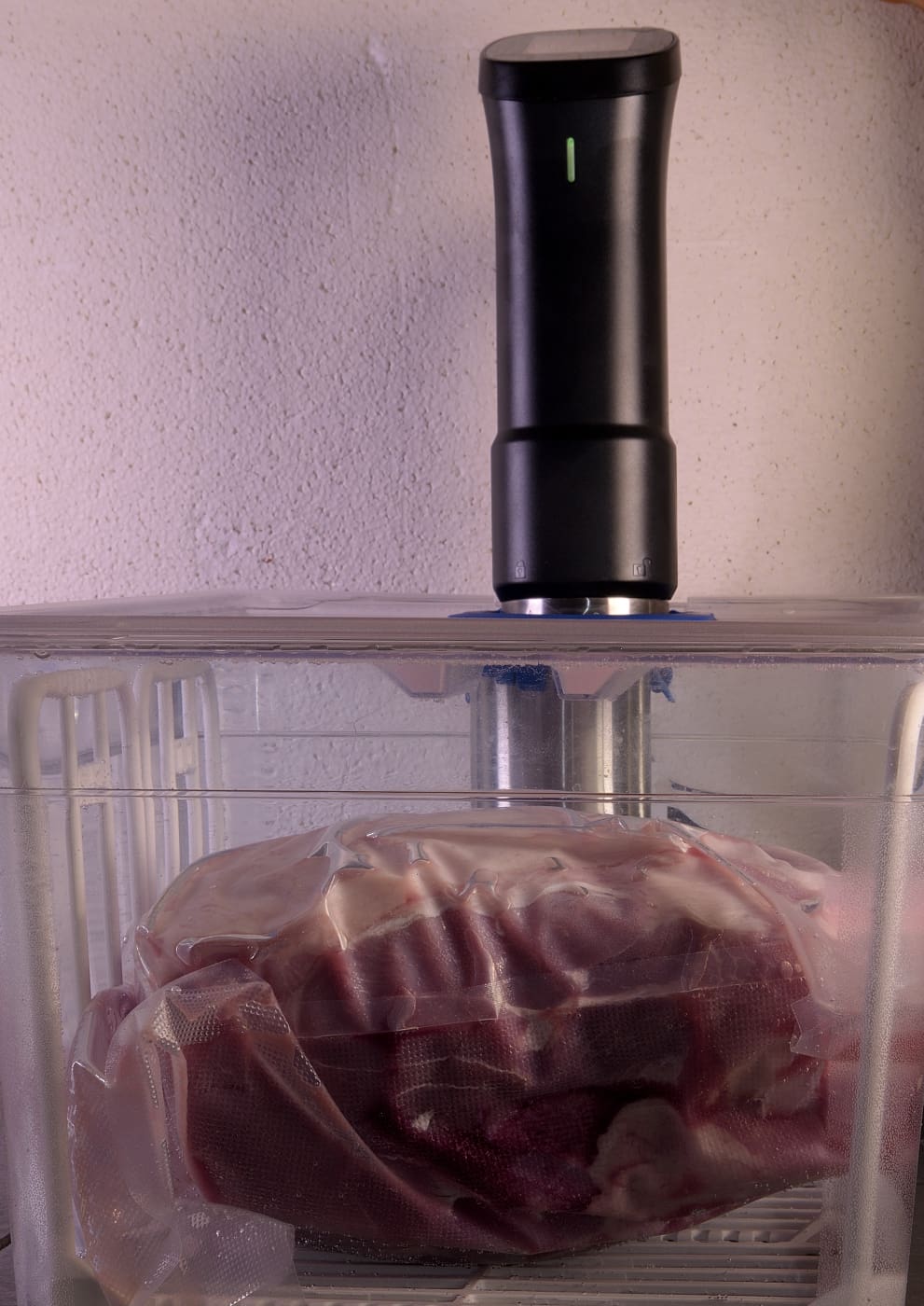
Make sure the roast is fully submerged so that water can circulate freely around all surfaces of the roast. Lipavi containers and racks are specifically designed to prevent the roast from coming in contact with the bottom or sides of the container.
When the processing time has elapsed, shock the package in iced water until it achieves 70 F/21 C. This very important safety procedure for roasts of this size applies whether you are processing sous vide or not. A roast (or a turkey) of this size should NEVER be cooled at room temperature–it takes too long to meet established safety guidelines. Since most of the smoke flavoring is imparted at temperatures below 140 F/60 C, failure to cold shock the roast before staging it into the smoker will limit the amount of smoke flavor transferred to the roast.
Be cool, Man
Submerge the packaged roast in a container of iced tap water that is at least twice the volume of the roast. Since meat is about the same density as water, a 16 oz piece of pork would require 32 oz of water in order to cool efficiently. An 11 lb./5 Kg roast will require at least 11 quarts–almost 3 gallons–of water to achieve the desired temperature, and so forth. Most kitchen sinks will hold enough water to accomplish this. How can you tell when the internal temperature of a large roast–or even a small one–has achieved 70 F/21 C? See below.
Then what?
Submerge the roast in the filled vessel/sink. Once the ice has melted, the water’s temperature will approach 70 F/21 C. Wait 30 minutes and use a probe or infrared thermometer to measure the water’s temperature. If it is above 70 F/21 C, drain the vessel/sink, refill with cold tap water and wait 15 minutes. Repeat this process until the water steadies at 70 F/21 C. Refrigerate the roast at 40 F/4 C. In this state, the pasteurized roast will keep for at least two weeks without compromising quality or wholesomeness.
Day of service
Season your roast
Visit HERE to access customized rub and seasoning recipes that we have created. If preferred, you may use your favorite proprietary rub. Most retail rubs are composed of sodium compounds and sugar. Garlic powder is a common ingredient, with paprika for color. Manufacturers reconstitute these components into multi-colored pebbles to catch our attention. I will concede that they are very convenient, but I almost always make my own. For this model, we used per lb.: 2 teaspoons kosher salt, 1 teaspoon sugar, 1 teaspoon ground pepper, 1 teaspoon paprika and 1 teaspoon garlic powder.
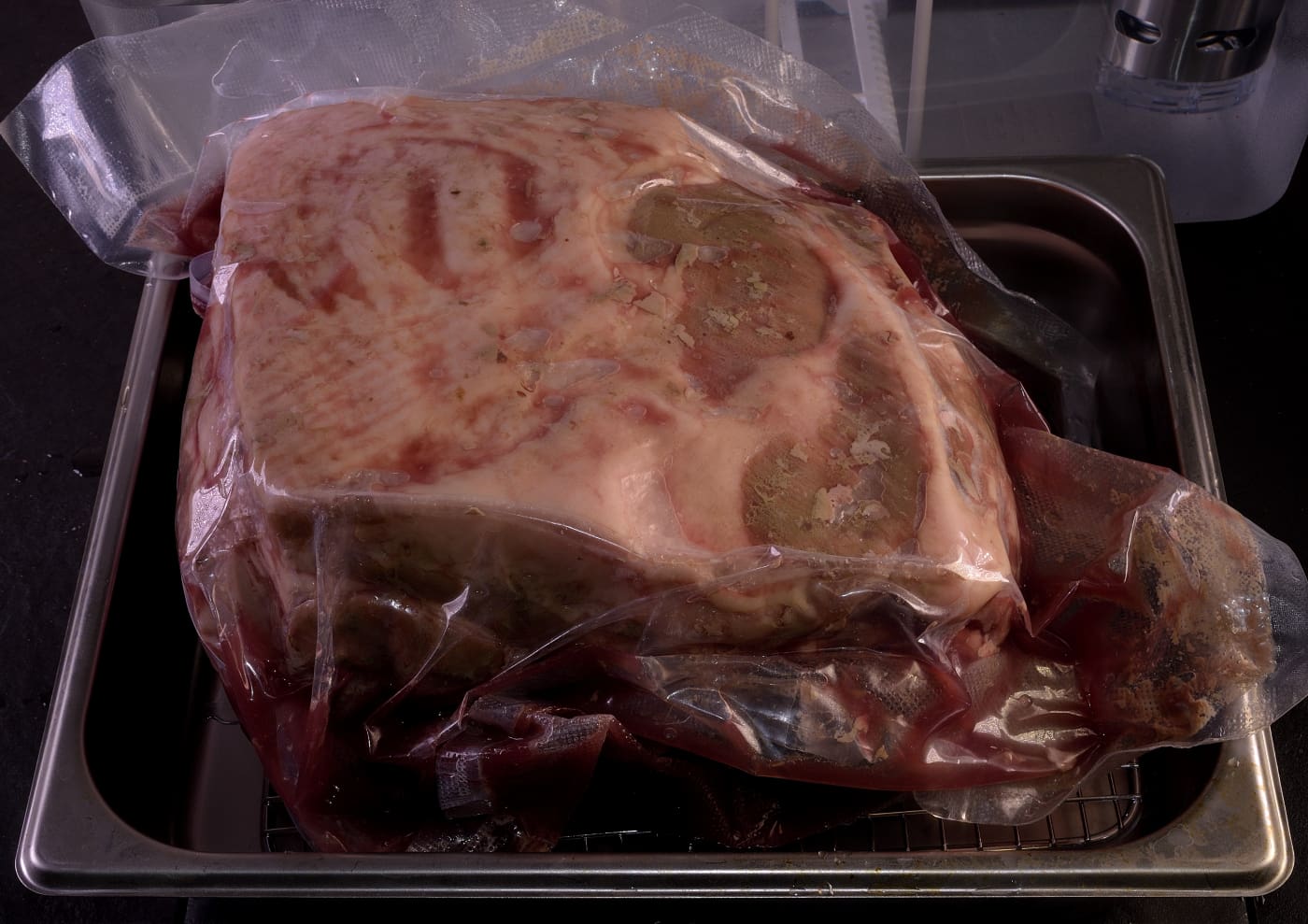
Submerge the entire cold package for 5-10 minutes in a preheated sous vide bath or hot tap water (110+ F/44+ C) to fully melt the gel. Cut one of the corners of the bag and collect the juices.
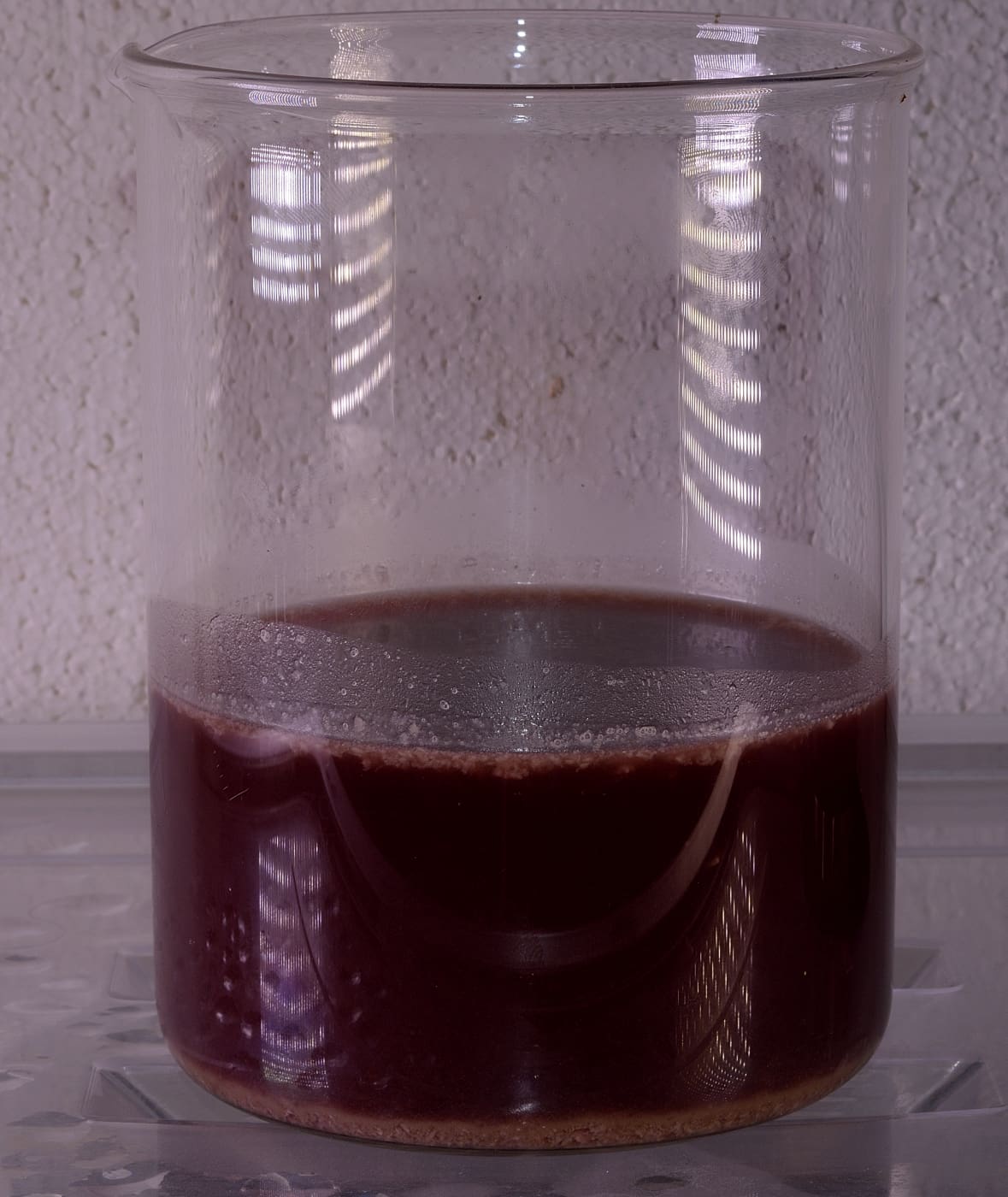
These gelatin rich juices are packed with flavor but cannot be used in this form. The myoglobin and albuminous proteins released during processing must be denatured and strained out.
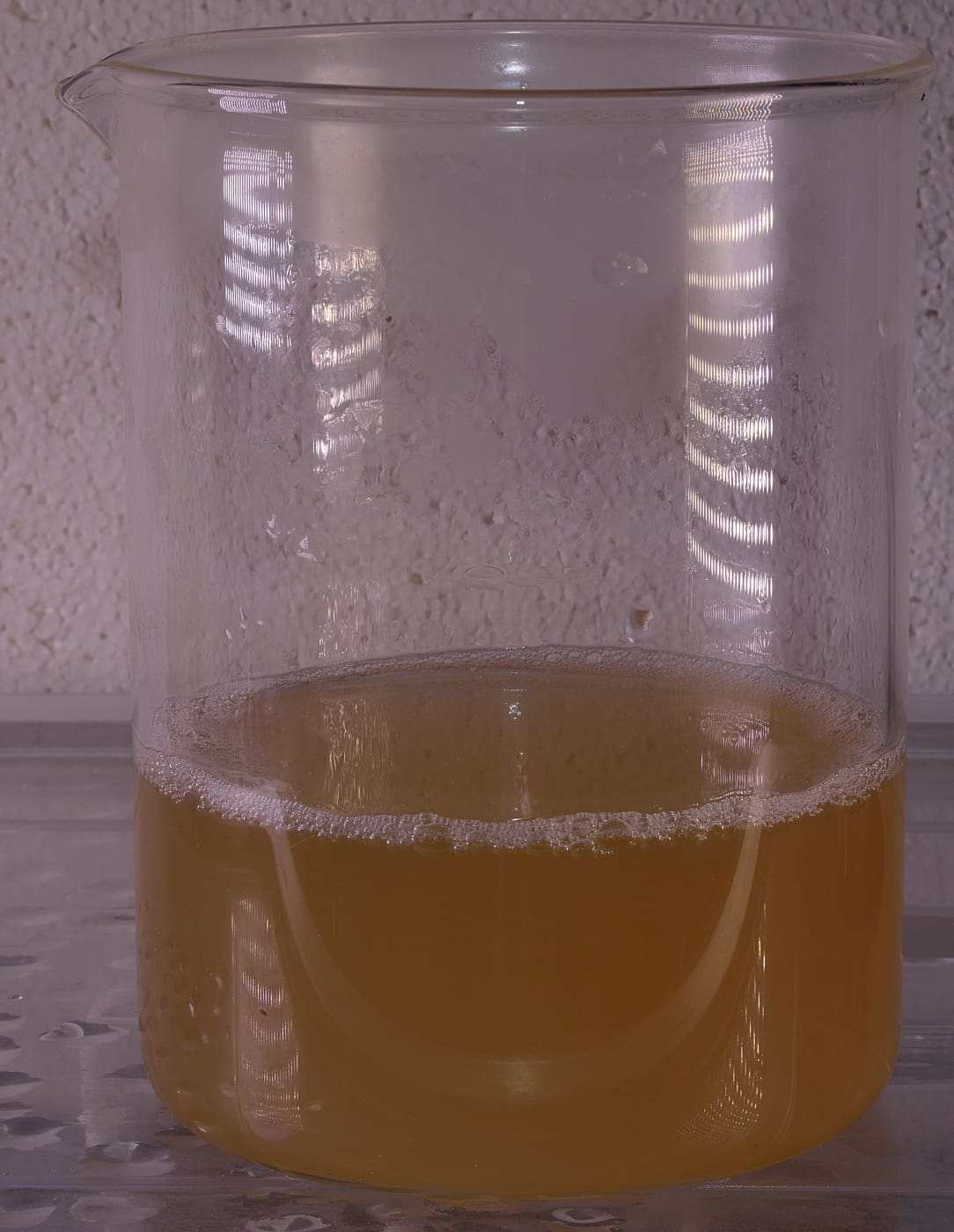
Click HERE to learn how to clarify the juices, which will be used to moisten the pulled pork. They can also be used in almost any recipe that calls for stock or water.
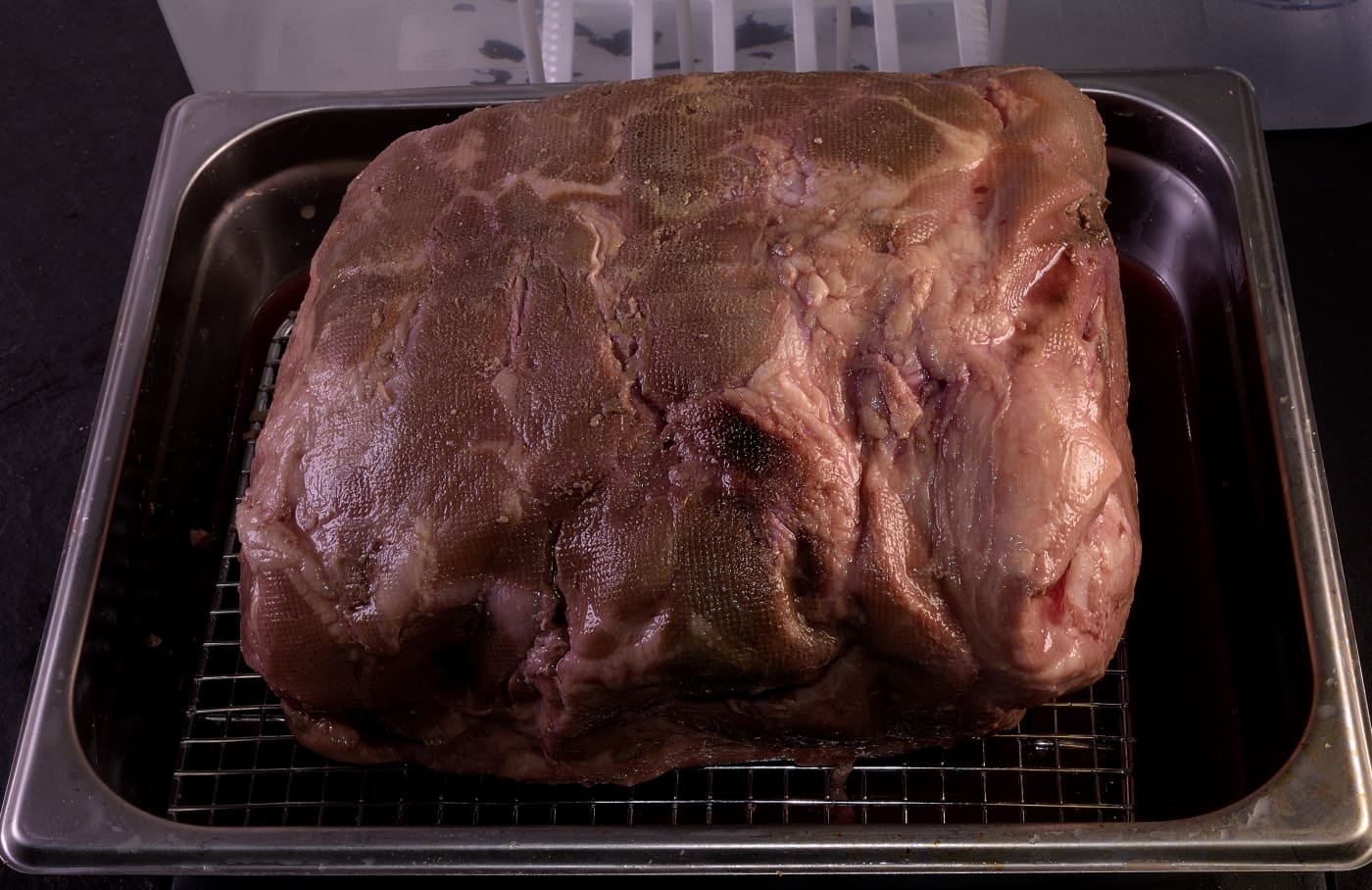
Remove the roast from bag and pat dry with paper towels. We will create a sticky surface so that our rub clings to the roast.
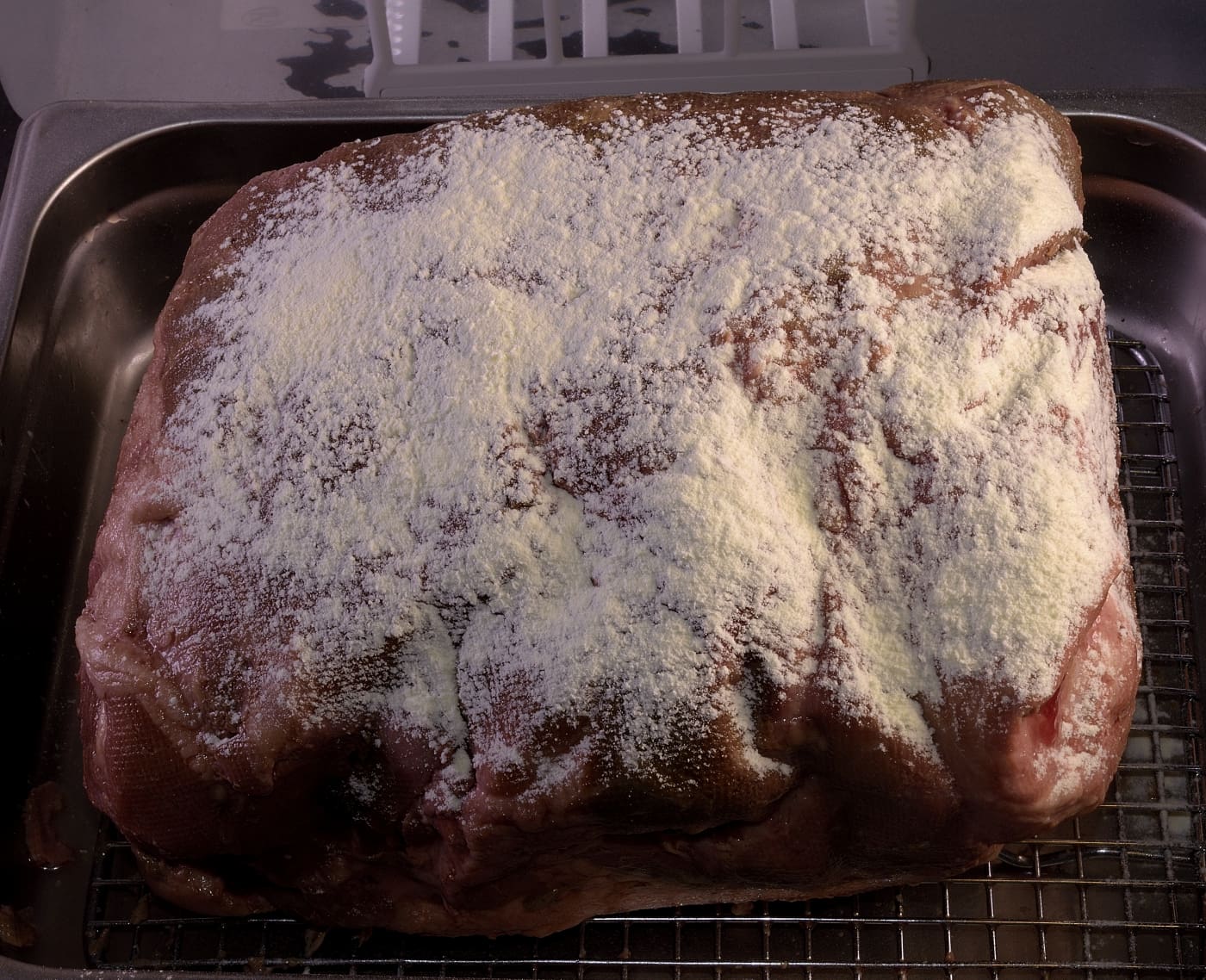
Use a dredge/shaker to sprinkle the surface with powdered egg whites. A fresh egg white beaten with an equal amount of water will achieve the same result.
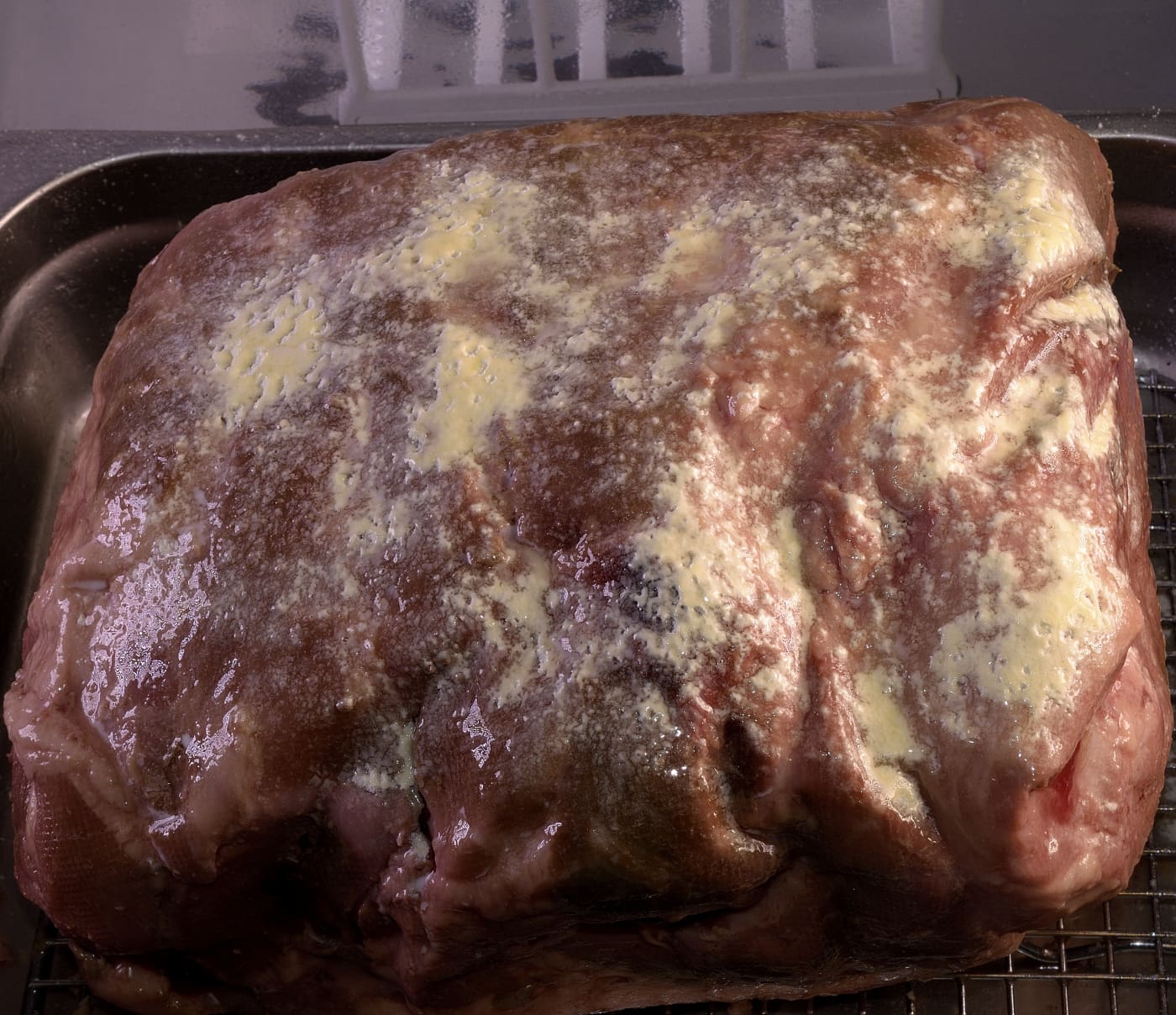
Use a spray bottle filled with water to dissolve the powdered egg white–skip this step if you are using fresh egg white. Use gloved hands to smear an even coating on the top and sides of the roast.

Sprinkle generously with your choice of seasonings.
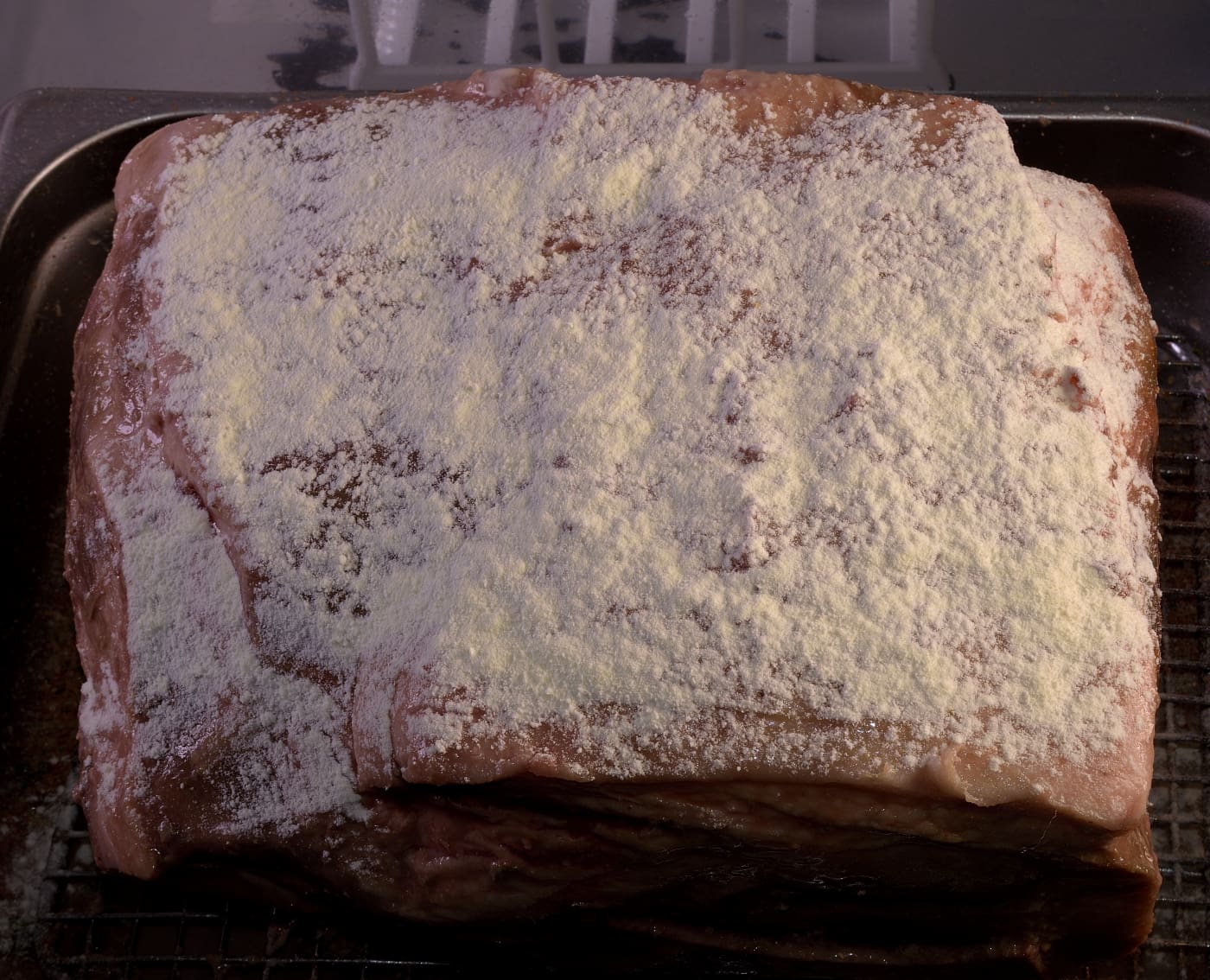
Turn the roast over and repeat the coating process.
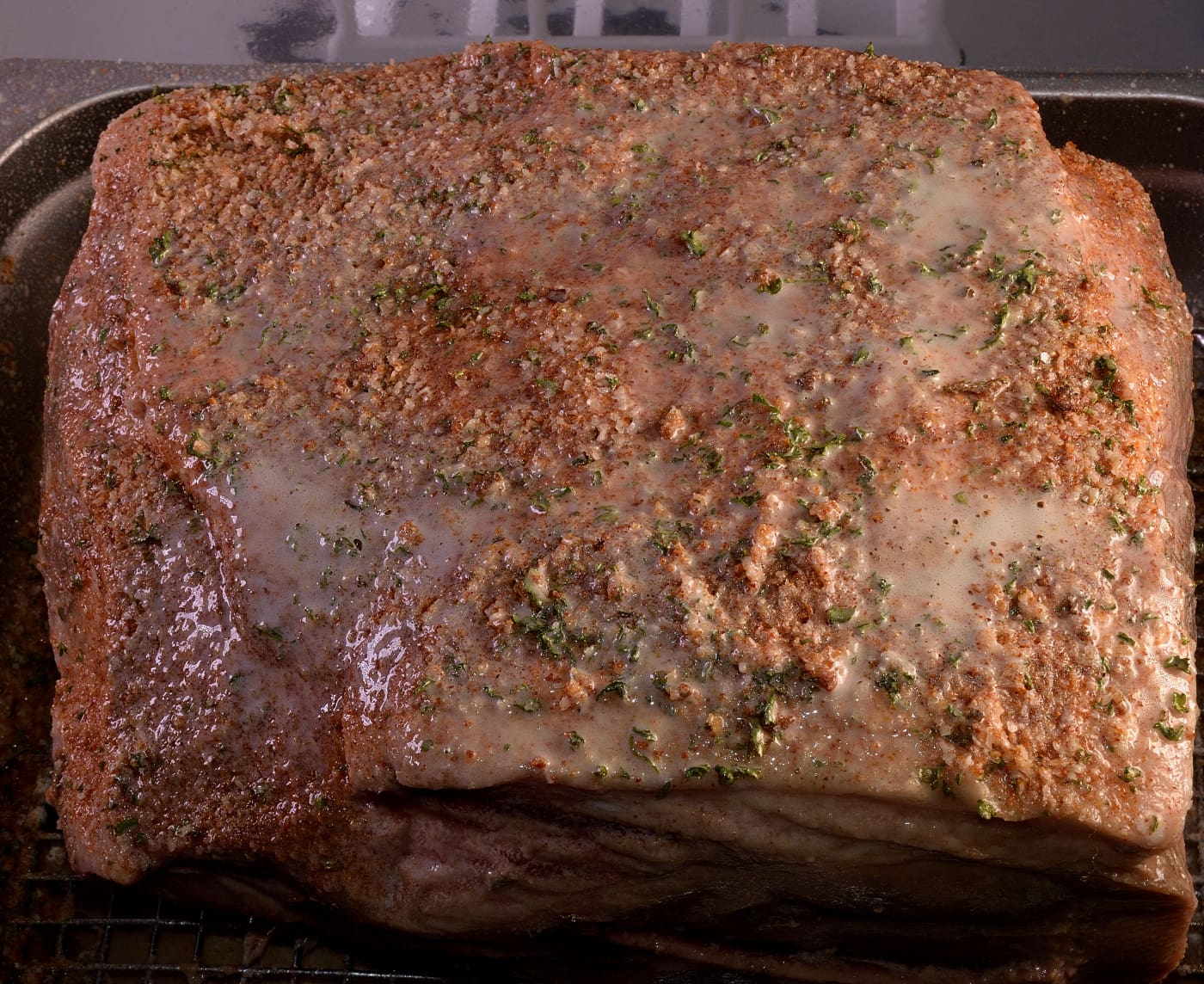
After seasoning the second side, mist with spray release or drizzle with oil.
Smoking the roast
Set your smoker on 325 F/160 C (or thereabouts). Many practitioners put a small pan of water in the cabinet to provide humidity and to accelerate the dissolution process.
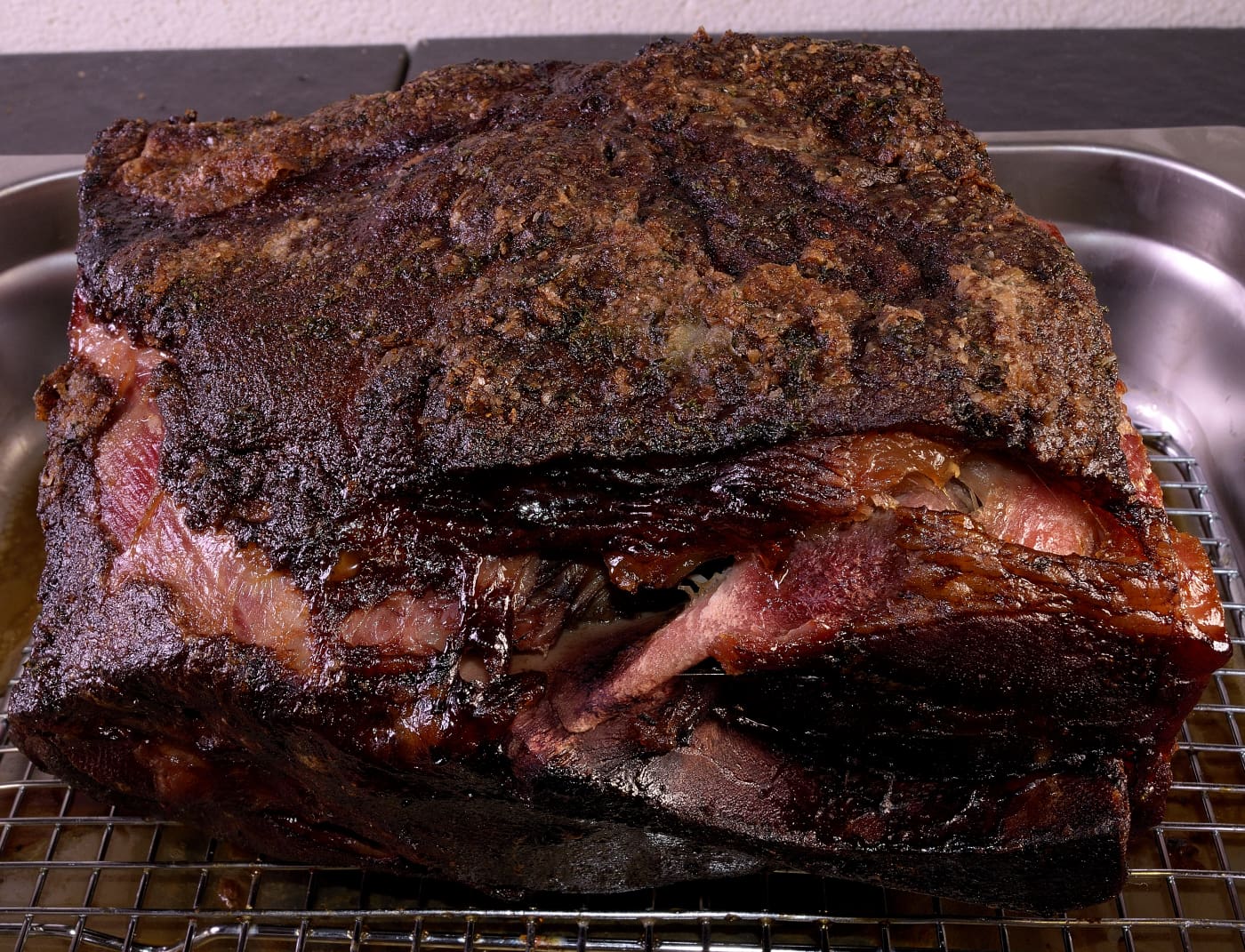
Smoke the pork butt until an internal temperature of at least 175 F/80 C is achieved. “Pullability” begins to occur when the scapula can be removed with a firm tug. The longer you process (or hold the roast at 175 F/80 C), the easier it will be to remove the bone. As time passes, more moisture will evaporate as well–it is up to the practitioner to balance the benefits against the drawbacks.
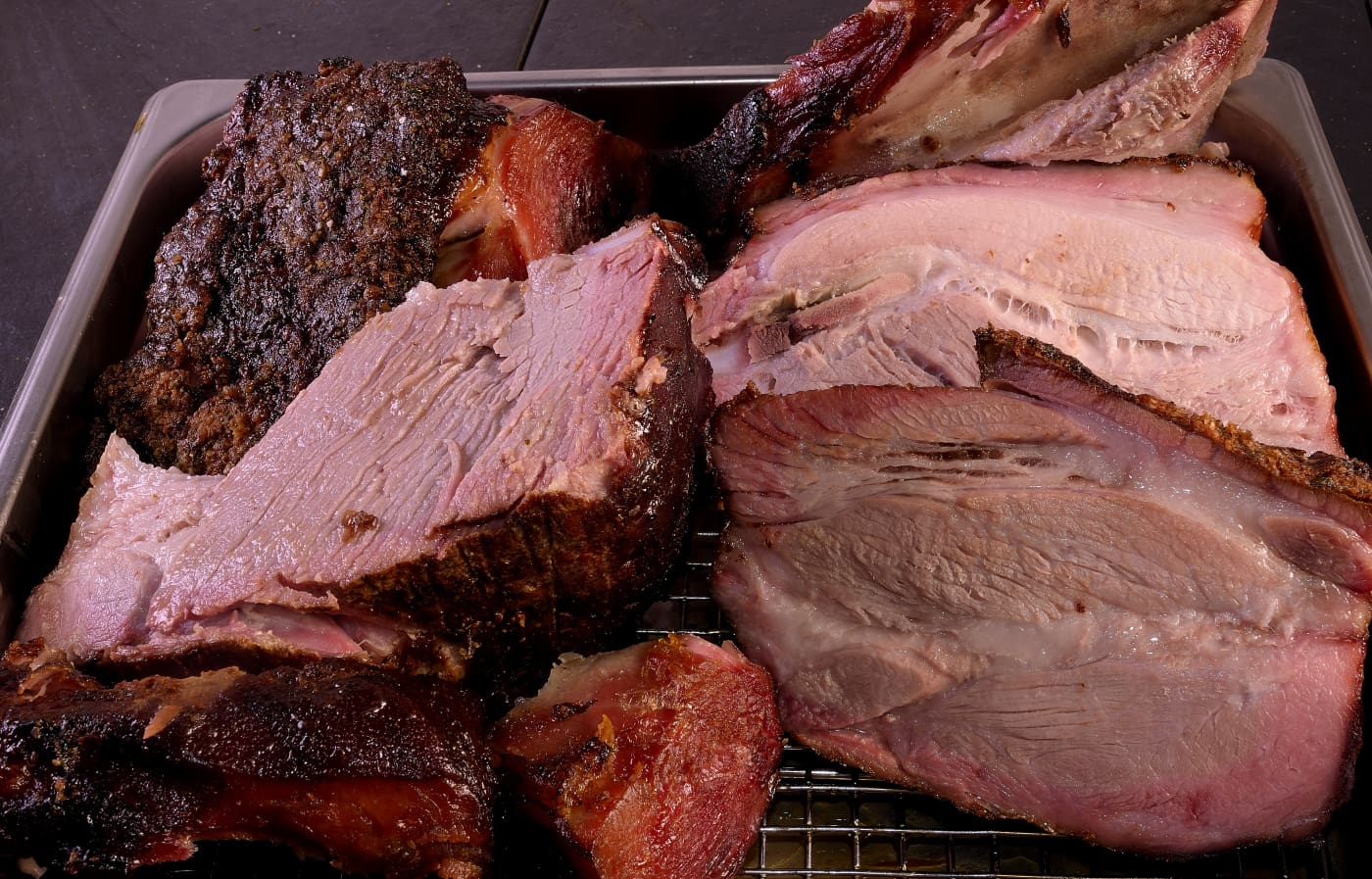
The characteristic “smoke ring” may be visible. This phenomenon contributes no flavor and is not an indication of smoke penetration. The smoke ring is the result of meat’s exposure to unburned fuel in the cabinet–CO, carbon monoxide and NO, nitric oxide, which also preserves the color of myoglobin.
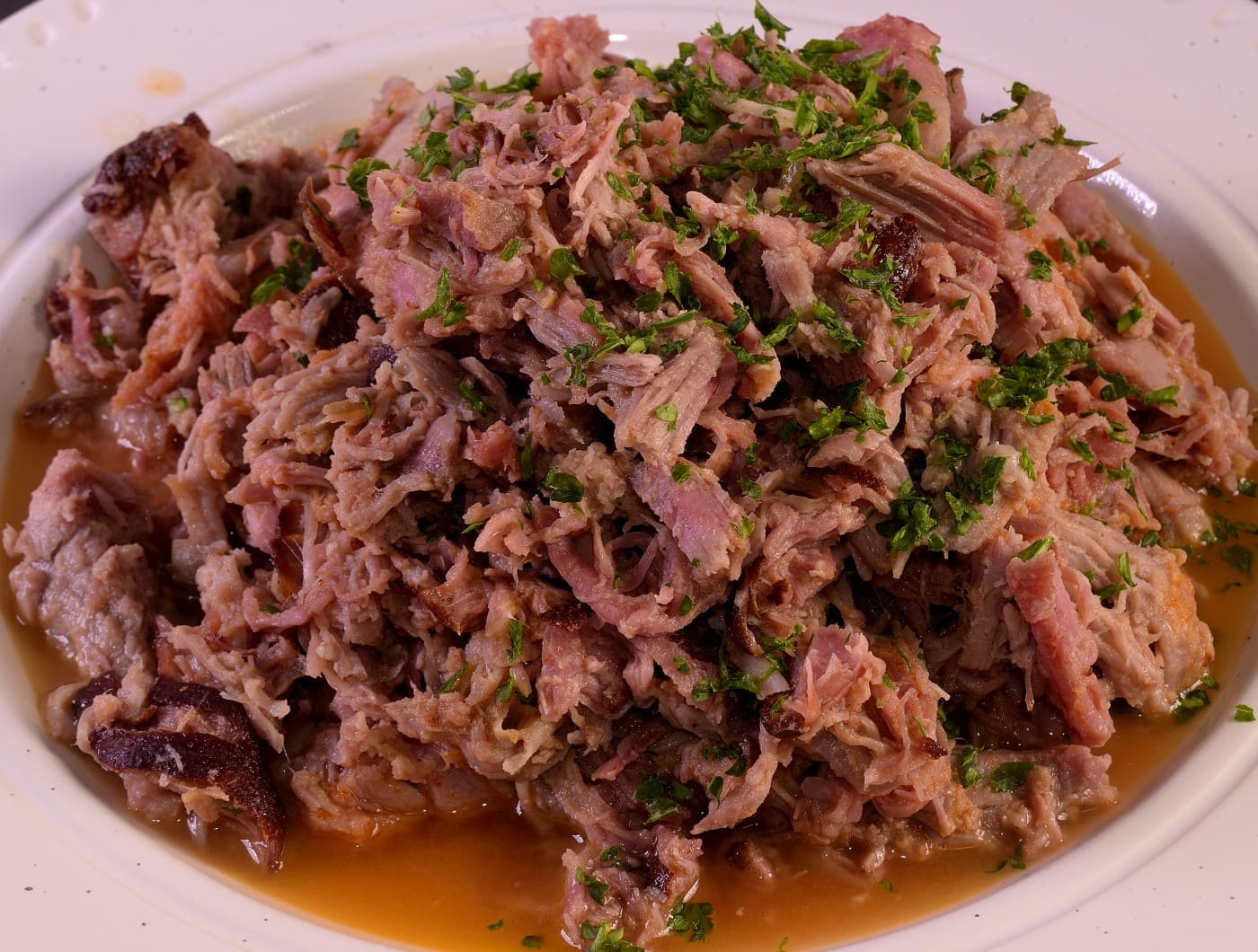
While special tools exist to mass produce shredded pork, many aficionados still prefer to use a simple fork or their bare hands. I use the paddle attachment on my Kitchenaid mixer.

Season the shredded pork and toss with butter and the clarified juices to moisten.
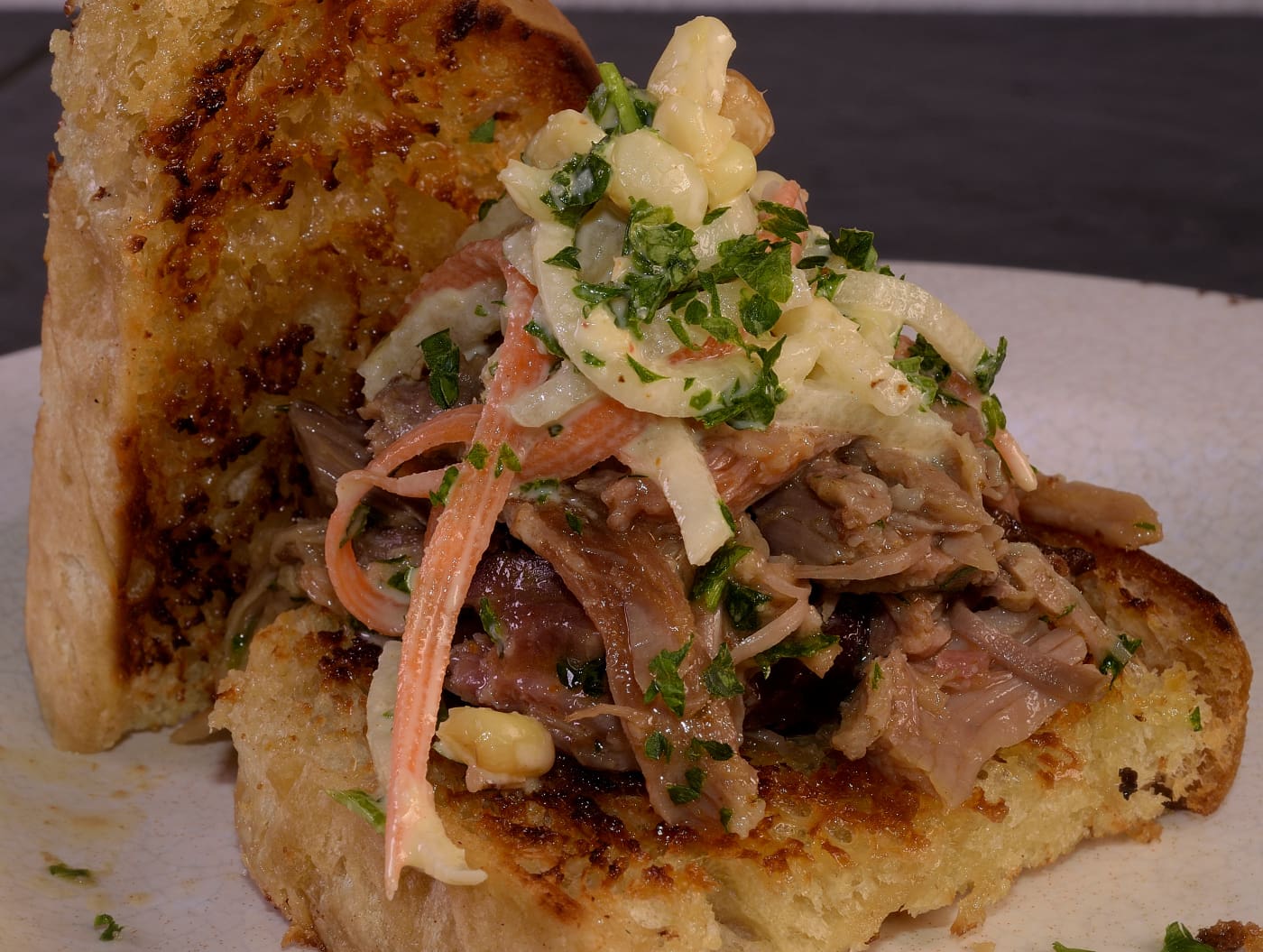
Any of the readily available pepper vinegars serve to create the familiar flavor profile. Today we used Cholula. Parsley goes without saying.
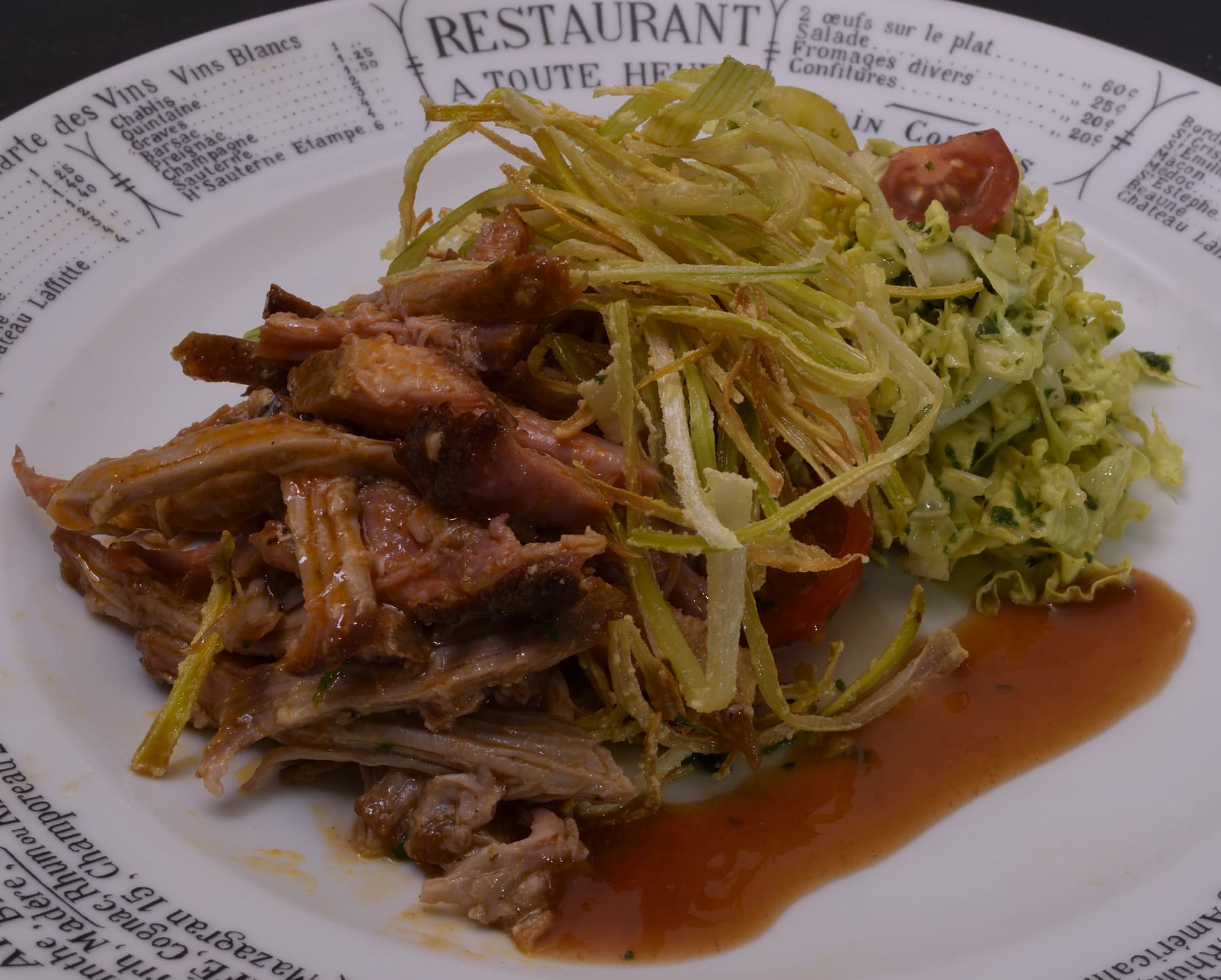
Adjust seasonings to your liking–if you want a little extra kick, you can add a little bit of your favorite rub, Dark Side BBQ sauce, Frank’s RedHot sauce, or any of the other myriad variations on this peppery/vinegary glaze/coating/slather–Tabasco, etc. Add the juices harvested from the bag AFTER mixing so as not to over-dissolve the meat. Add a little butter as well–about 1 Tablespoon/lb. of shredded meat.
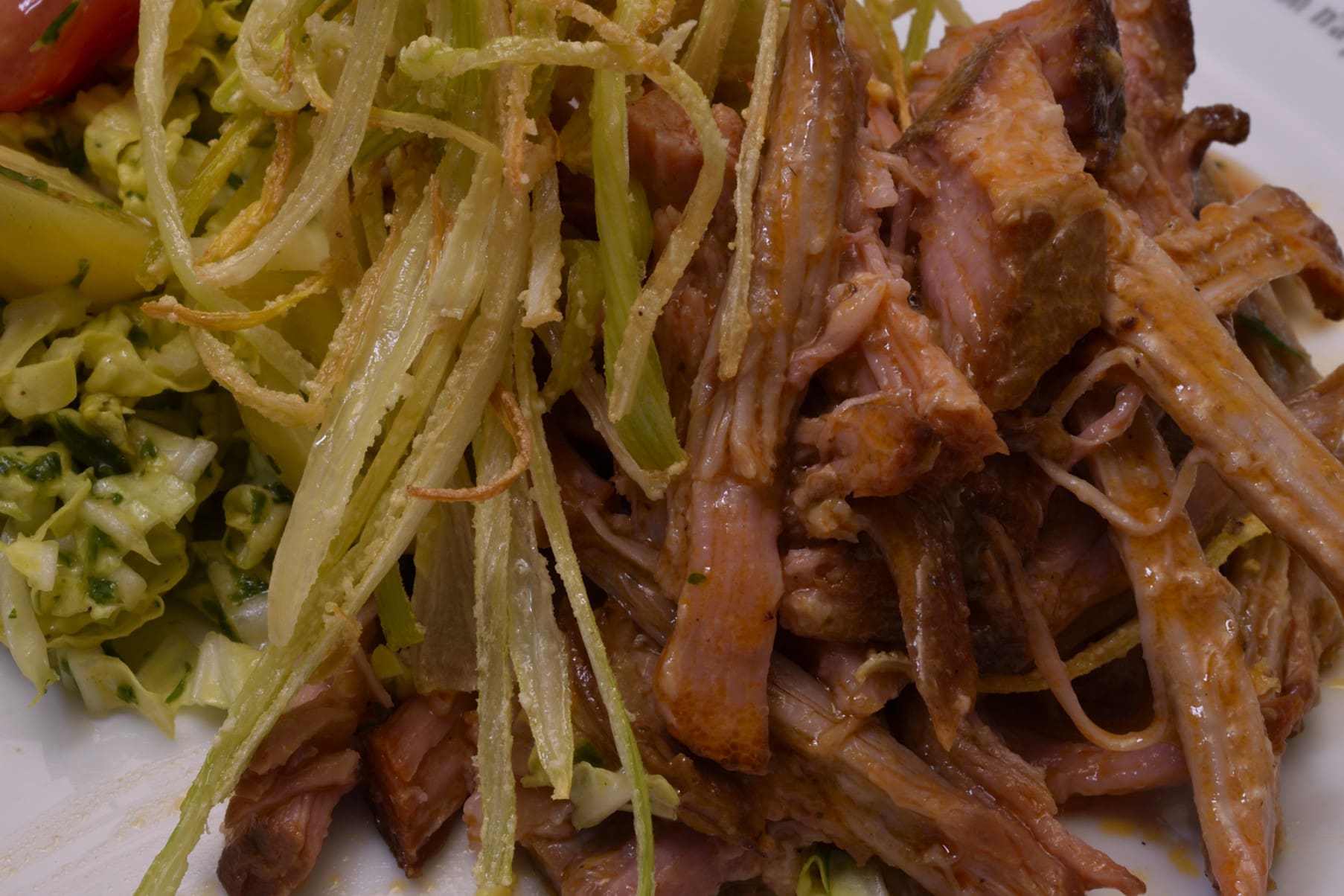
Razor thin sliced leeks are soaked in ice water, drained, tossed in flour and allowed to rest for five minutes.
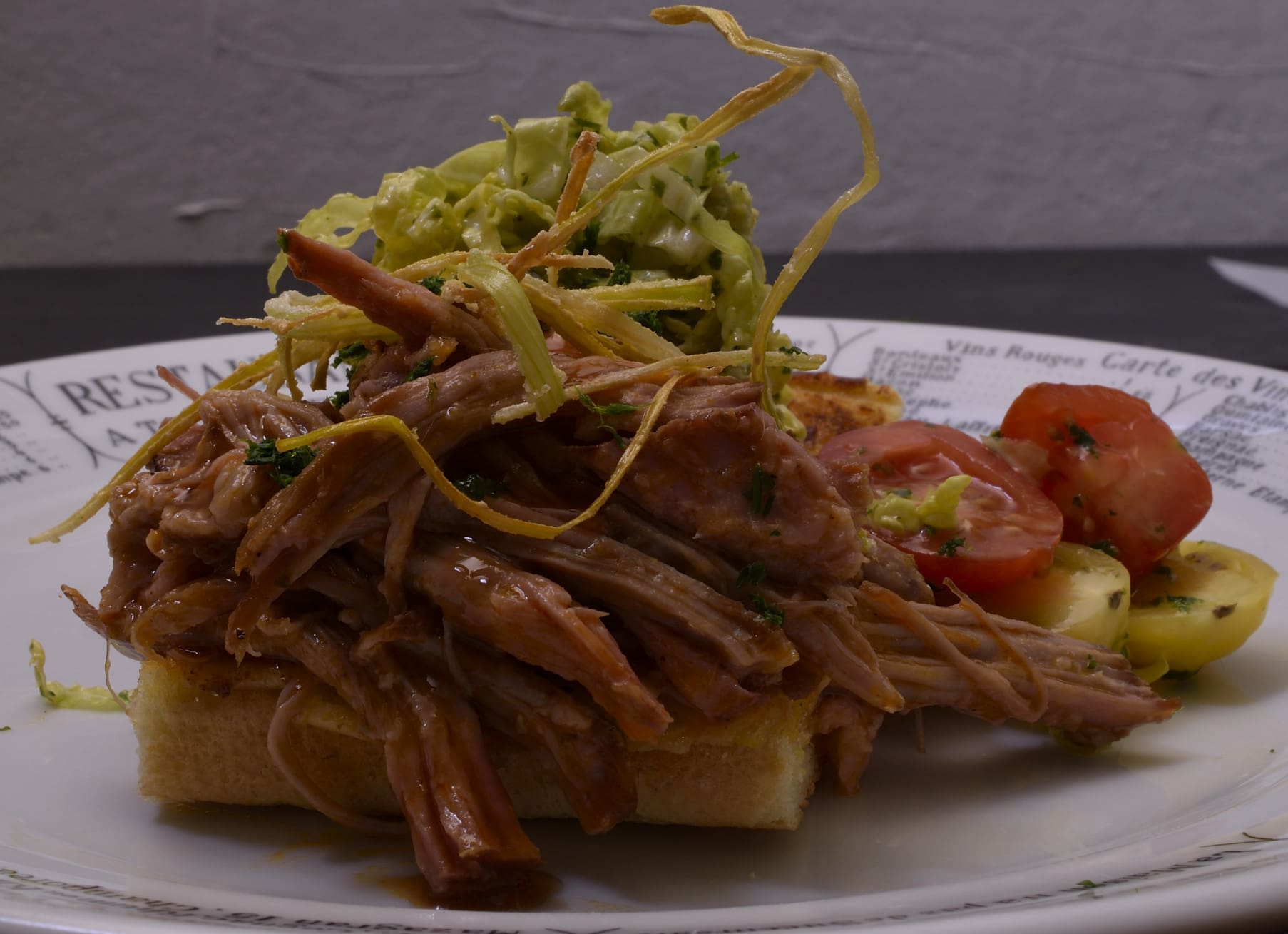
Toss the leeks lightly once again to make sure the surface is dry and deep fry at 350 F/176 C to create the crispy strings.

Coleslaw with roasted corn, made with kohlrabi instead of cabbage.
Norm King
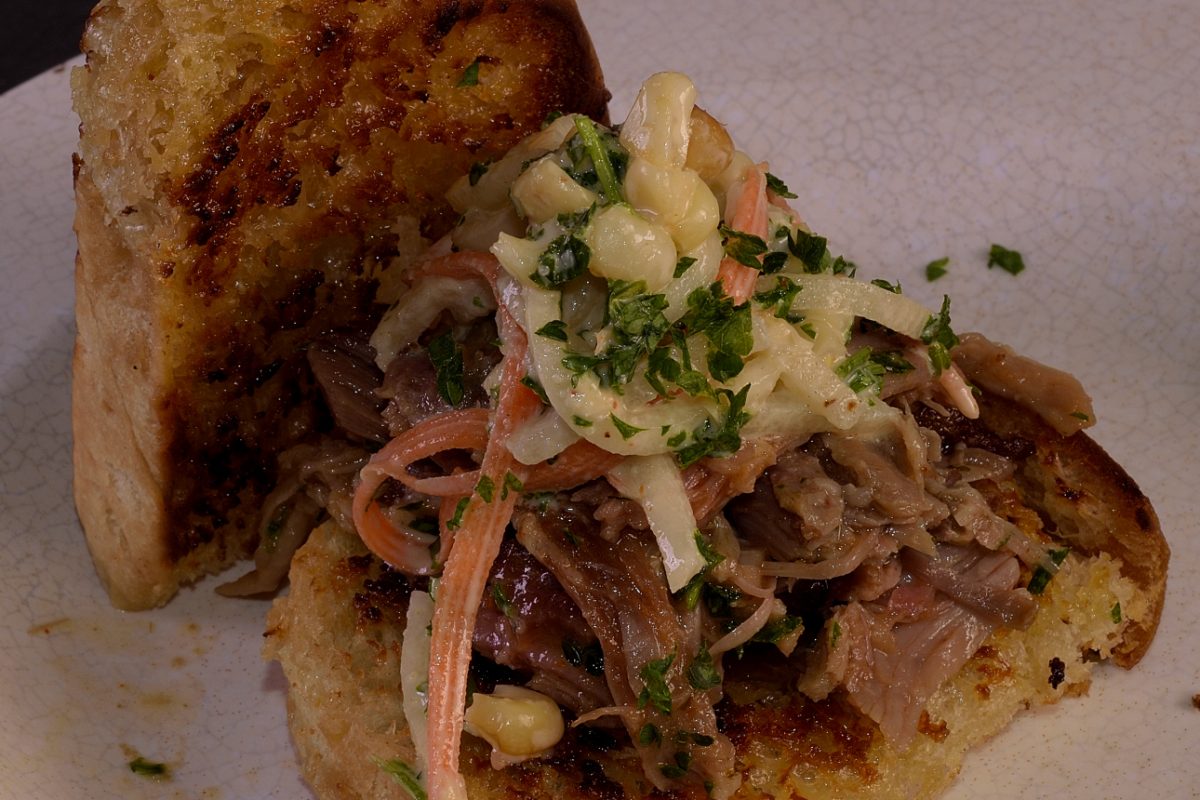
Wow, marvelous blog format! How long have you ever been running a blog for?
you made running a blog glance easy. The overall look
of your site is wonderful, as neatly as the content material!
You can see similar here sklep
Howdy! Do you know if they make any plugins to help with SEO?
I’m trying to get my website to rank for some targeted keywords but
I’m not seeing very good gains. If you know of any please share.
Many thanks! I saw similar art here: Backlink Building